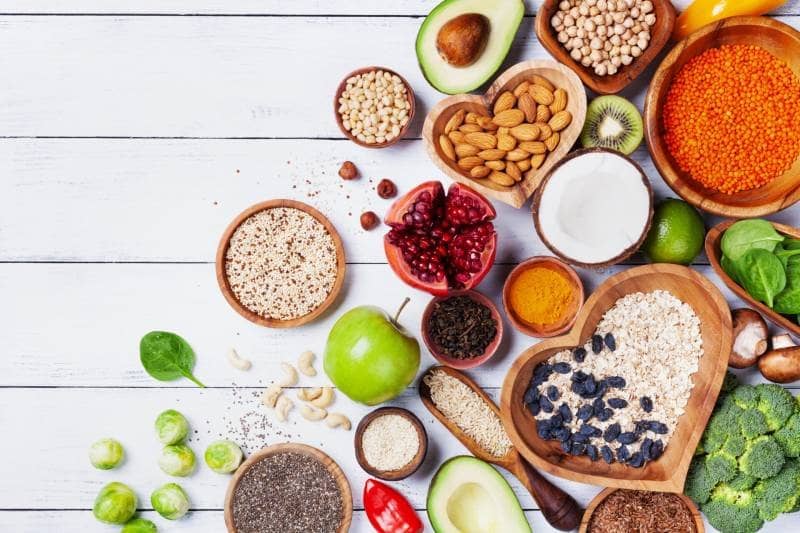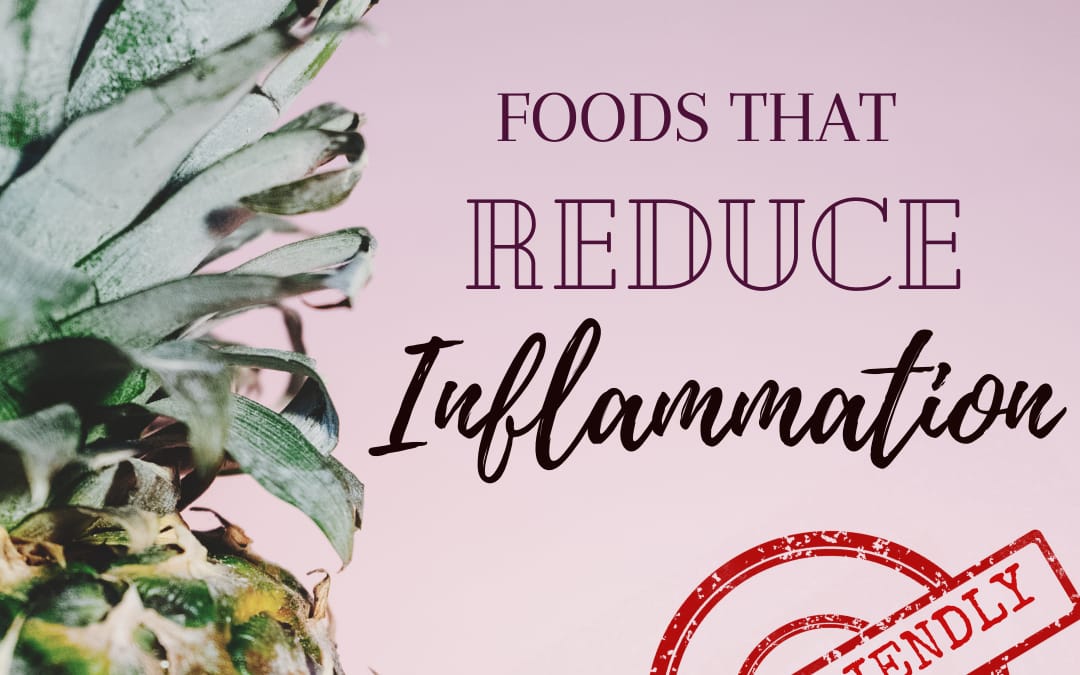Vegan Globetrotter is supported by our audience. When you purchase through one of our links, we may earn a small affiliate commission. As an Amazon Associate I earn from qualifying purchases. Your cost is not affected.
==================
What Foods Reduce Inflammation – Plant-Based and Vegan-Friendly!
Are you looking for what foods reduce inflammation? Is it all while having plant-based and vegan-friendly options? Worry no more! We got you covered. We will explain to you all you need to know about inflammation. Science has proven time and again how important maintaining a healthy diet is in fixing a lot of things in our bodies. When combined with regular exercise it will surely make you live a healthy and more fruitful life. That is why knowing what foods reduce inflammation is essential. In addition, you can’t go wrong with plant-based and vegan-friendly options.

Yes to healthy foods, no to inflammation!
What is Inflammation?

Avoid inflammation!
According to NCBI, inflammation is the body’s immune system’s response to an irritant when defined in general terms. Inflammation is our body’s way of protecting itself from those who harm it. But in some chronic diseases, your body’s defense system mistakenly thinks intruders are present even if there are none.
5 Common Signs of Inflammation:
- Swelling – this occurs when a part of the body increases in size.
- Pain – can be constant pain, or only when the affected area is touched.
- Redness – this can happen due to an increase in blood supply to the capillaries.
- Heat – when there is an increase in blood flow, the area affected may be warm to the touch.
- Loss of function – can range from difficulty in breathing or moving a joint or even loss of smell.
Kinds of Inflammation:
- Acute – this is the kind of inflammation that is short-lived and can disappear after a couple of hours. In addition, Acute inflammation happens typically after a sprained ankle or a cut on the knee.
- Chronic – is the kind of inflammation that is long-lived. Also, Chronic inflammation can last up to months or even years. Conditions that are associated with this type of inflammation are certain heart diseases, cancer, and diabetes. Some kinds of arthritis are even the result of chronic inflammation.
Tips to Reduce Inflammation:
The way to reduce inflammation depends on what type of inflammation you have. You can quickly reduce acute inflammation, which needs conscious effort and commitment to regular diet and exercise compared to chronic inflammation.
Treating Acute Inflammation
- Ice the area – you need to apply an ice pack that can help reduce inflammation.
- Elevate the area – another way to reduce inflammation is to raise your foot or ankle.
-
- Compression – You may also use compression to control swelling in certain kinds of inflammation.
- Rest – avoid strenuous activities that would further aggravate the swelling.
- Aloe Vera Gel – it contains many anti-inflammatory properties. One way to treat skin rashes is by applying a good amount of aloe vera gel. You can take the aloe vera gel directly from a plant, or you can buy aloe vera gel in stores. Similarly, Aloe vera gel can also help people with eczema retain the necessary moisture.
- German chamomile – research has shown it can help reduce acute and chronic inflammation. Chamomile oil, when applied to the skin, can help with inflammation and moisturize your skin. In contrast, chamomile tea can help with chronic inflammation due to its antioxidants and anti-inflammatory properties.
Treating Chronic Inflammation
- Regularly Exercise – Exercise will help your body to become strong and healthy.
- Eat Healthier Foods – in treating chronic inflammation; diet plays a crucial role in helping such. What foods reduce inflammation is vital to know since many foods out there can significantly help alleviate pain. Listed below are the plant-based foods that will help. However, sometimes even regular exercise and a healthy diet are not enough. When this happens, consulting a professional is necessary.
- Consult your doctor –to illustrate in cases of severe chronic inflammation, consulting a doctor is vital. The reason for this is that specific chronic inflammation requires the use of steroids or prescriptive medicine.
A Guide to What Foods Reduce Inflammation
-
Rosemary
First on our list of foods that reduce inflammation is Rosemary. It is a shrub that grows in the sub-Himalayan area and along the Mediterranean sea. For many years, rosemary has been used in folk medicine to cure various health afflictions like; migraines, insomnia, and headaches. Aside from this, rosemary also contains anti-inflammatory and anti-microbial properties. An easy way to incorporate rosemary into your diet is by steeping rosemary leaves for a couple of minutes to produce rosemary tea.
-
Witch Hazel
Next is Witch Hazel, a plant that has been used for many years as medicine. When applied directly to the skin, witch hazel can help with pain, swelling, varicose veins, bruises such as insect bites, minor burns, and other skin conditions. The reason for this is that Witch Hazel contains a chemical called Tannins. This antioxidant helps protect our bodies from cell damage, and it also has anti-microbial properties. Witch Hazel can be applied directly to the skin by soaking a cotton pad or tissue paper into the solution and applied to the skin.
-
Aloe Vera
Aloe Vera is a succulent plant with many health benefits and used for years in alternative medicine. Research has shown that swishing aloe vera juice mouthwash has helped with gingival inflammation. An excellent alternative to soda or other sugary drinks, aloe vera juice, can easily be incorporated into your diet.
-
Carrots
A carrot is an orange-hued vegetable that packs a lot of nutrients and minerals.
Contains Vitamin A and Beta-Carotene
Research has shown that vitamin A can help our immune system from overacting, thus preventing inflammation. While beta-carotene is an antioxidant that can help suppress Cox-2 (an enzyme that speeds the development of elements that cause pain and inflammation.) Carrots can also help with several health afflictions like Alzheimer’s, certain cancers, and heart diseases.
Carotenemia
It is recommended to eat only the recommended daily intake of carrots since overeating may cause carotenemia. A condition that can make your skin turn an orange-yellow color.
-
Spinach
Spinach is a dark, green leafy vegetable that is extremely rich in vitamins and minerals. No wonder Popeye eats spinach so much to get stronger!
Rich in Lutein
Lutein is a type of vitamin that has anti-inflammatory properties. Not only that, but research has also shown evidence that lutein is beneficial for eye health.
Good Source of Vitamins and Minerals
Spinach is also rich in vitamins and minerals, including vitamin B6, vitamin B9, vitamin E, potassium, and magnesium.
It is best for you to eat this when cooked. The reason is that spinach contains oxalic acid, which blocks the absorption of iron and calcium, but this breaks down if under high temperatures.
-
Beets
It is a popular root vegetable, which is packed with essential vitamins and minerals to help our body become healthy.
Contains Betalains
Betalains are pigments found in beets which gives them a distinct red color. In fact, they have anti-inflammatory properties and also provide antioxidants and detoxification.
You should eat Beets at best when steamed only, and this is because the longer beets are cooked, the lesser beets will retain their nutrients. It is suggested that beets be steamed for no more than 15 minutes to keep all the necessary vitamins and minerals.
-
Cauliflower
Cauliflower is an annual plant that produces by seed. Also, Cauliflower contains vitamin C, which has anti-inflammatory properties and is also known to reduce the chances of getting cancer.
An easy way to incorporate cauliflower into your diet is by making cauliflower rice. Cauliflower rice was believed to be created by Ben Ford, a chef in California. However, he called this cauliflower couscous. Read on to know how to make this yummy cauliflower rice!
How to make Cauliflower Rice:
- Grate the cauliflower by using a grater or a food processor.
- Once the cauliflower is in tiny rice-sized pieces, you can proceed to sauté your creation.
- In a large pan, sauté your cauliflower over medium heat using your preferred oil. One tablespoon is enough.
- Cover your cauliflower and cook it for 5 to 8 minutes
- Add pepper or salt to taste – and you’re done!
-
Kale
It has gained popularity in recent years in the vegan community and all over the world. This dark green leafy vegetable is packed with needed vitamins and minerals.
Contains Phytonutrients and Antioxidants
Kale contains many phytonutrients and antioxidants high in anti-inflammatory properties and helps our bodies from cellular damage.
The best way to eat kale is by steaming it to maintain all the vitamins and minerals. The recommended time is about 5 minutes. Add kale to your favorite salad to get the best use out of this nutritious vegetable.
-
Turmeric
A yellow spice popularly used for Indian cuisines, turmeric is an excellent source of nutrients and vitamins.
Curcumin is an ingredient you can find in turmeric. It is an antioxidant that has anti-inflammatory effects. Research has shown that the best way to take turmeric is by adding it to a liquid. You can add turmeric to your morning shake to get a boost of nutrients.
-
The Green Tea
It is a fantastic way to help with reducing inflammation. In addition, green tea has antioxidants called catechins that reduce inflammation and prevent cell damage. Drinking a daily dose of green tea can help immensely lower chronic inflammation when paired with a healthy diet.
-
Tomatoes
Long believed to aggravate inflammation, recent studies show that tomatoes contain lycopene which is beneficial in reducing inflammation.
-
Chia Seeds
Finally on foods that reduce inflammation is chia seeds. These are the edible of a flowering plant from the mint family. The seeds have a long history in Mexico and Guatemala. In ancient Aztec and Mesoamerican civilizations, they were considered a major crop. The seeds were used for medicinal purposes, and it was an essential part of the people’s diet.
Things to Note:
Now that you know what foods reduce inflammation, your road to a better life is now within reach. Always remember that knowing what foods reduce inflammation is only the first step. Being able to maintain this healthy lifestyle which involves regular exercise and a healthy diet, requires commitment. That being said, a small step towards the right goal will always be a significant step to a healthy and fulfilling life.





Don't miss out
when new recipes and information are added!
Join our newsletter for free recipes,
healthy living inspiration, and special offers
You have Successfully Subscribed!